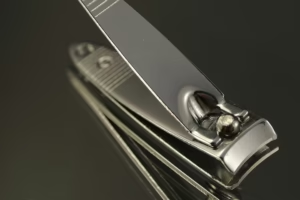Nail Care 101: Essential Tips for Healthy and Strong Nails
Having strong, healthy nails is a reflection of overall well-being, as well as a key indicator of personal grooming. Whether you’re aiming for a polished look or simply want to maintain your natural nails, proper nail care is essential. In this article, we’ll cover some vital tips to help you achieve and maintain beautiful nails.
1. Keep Your Nails Clean and Dry
The foundation of good nail care starts with cleanliness. Keeping your nails clean prevents the buildup of dirt and bacteria. Use a soft brush to gently scrub your nails and the surrounding skin to remove debris. After cleaning, ensure that your nails are thoroughly dried to prevent fungal infections that thrive in moisture.
2. Moisturize Regularly
Just as your skin benefits from moisturization, so do your nails. Apply a moisturizing lotion or cuticle oil regularly to keep the nail bed and surrounding skin hydrated. Ingredients like jojoba oil, almond oil, and vitamin E are especially beneficial. This will prevent the nails from becoming brittle and reduce the chances of hangnails.
3. Practice Proper Nail Trimming Techniques
Regular trimming is essential for maintaining nail health. Use sharp, sanitized nail clippers and cut straight across to prevent ingrown nails. After clipping, gently round the edges with a nail file to avoid snags. Avoid cutting or pushing back your cuticles aggressively, as this can cause injury and lead to infection.
4. Avoid Nail Biting
Nail biting is a common habit that can lead to damaged nails and infections. If you find it difficult to stop, consider applying bitter-tasting nail polish or finding alternative stress-relief methods. Keeping your nails trimmed and manicured can also reduce the temptation to bite.
5. Limit Exposure to Harsh Chemicals
Frequent exposure to harsh chemicals, such as those found in cleaning products or certain nail polishes, can weaken your nails. When cleaning, wear gloves to protect your nails. Choose acetone-free nail polish removers and polish that is free from harmful chemicals like toluene and formaldehyde.
6. Balance Your Diet
What you eat significantly impacts the health of your nails. Incorporate foods rich in biotin, protein, and vitamins into your diet. Eggs, nuts, seafood, leafy greens, and whole grains can contribute to stronger nails. Drinking plenty of water is also crucial for hydration and nail health.
7. Limit Use of Nail Products
While nail polish and enhancements can be fun, excessive use can damage your natural nails. If you enjoy nail polish, give your nails a break periodically and allow them to breathe. Also, be cautious with fake nails; improper application and removal can lead to peeling and damage.
8. Protect Your Nails During Activities
If you engage in activities that can harm your nails – such as gardening, dishwashing, or using tools – it’s essential to protect them. Wear gloves to shield your nails and hands from physical damage and chemicals that can weaken them.
9. Monitor Changes in Your Nails
Be vigilant about any changes in your nails, such as discoloration, brittleness, or unusual shape. These can be indicators of underlying health issues. If you notice any persistent abnormalities, consult a healthcare professional to determine if further investigation is necessary.
10. Pamper Yourself with Professional Care
Occasional visits to a nail salon for professional manicures can help maintain your nails’ health and appearance. Ensure that the salon follows strict hygiene standards, and do not hesitate to bring your tools if you prefer. Additionally, consider investing in a few tools for home pampering sessions, such as a good-quality nail file, buffer, cuticle pusher, and clippers.
Conclusion
With a little effort and the right practices, you can nurture your nails to be strong, healthy, and beautiful. Remember, healthy nails are a combination of proper care, nutrition, and awareness of risks. Incorporate these tips into your routine to enjoy the benefits of stunning nails—because everyone deserves a little pampering!


























Add Comment